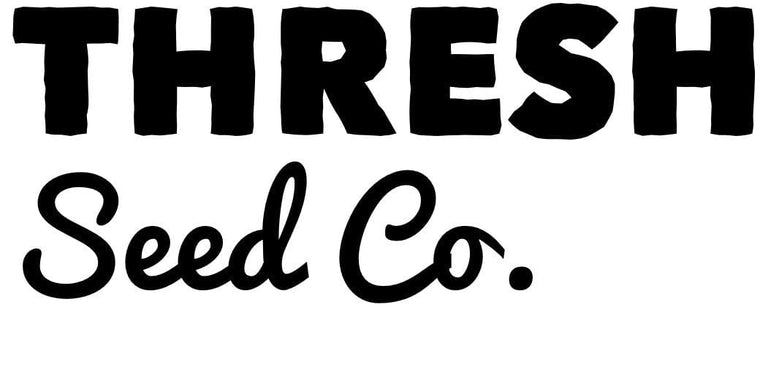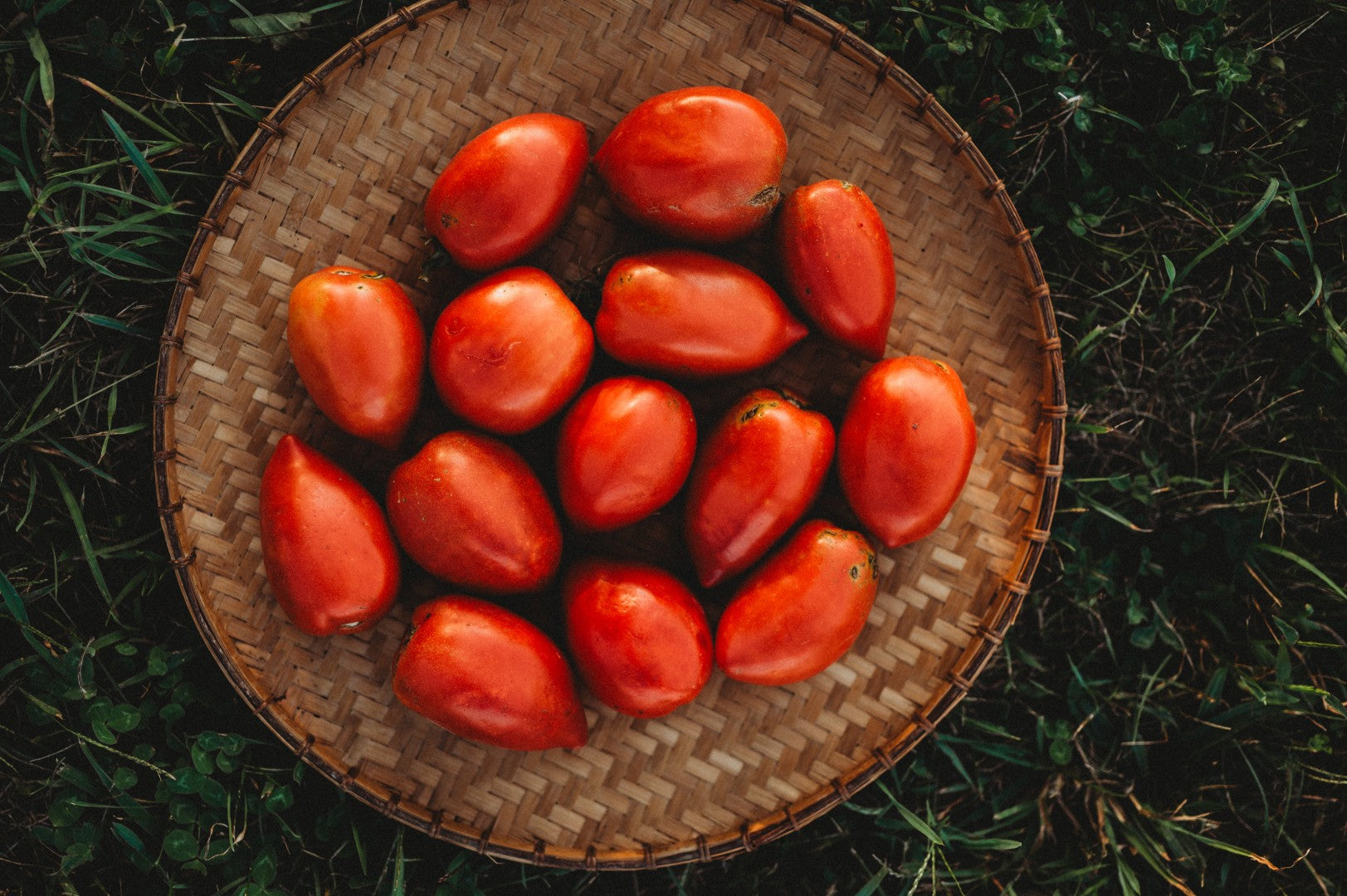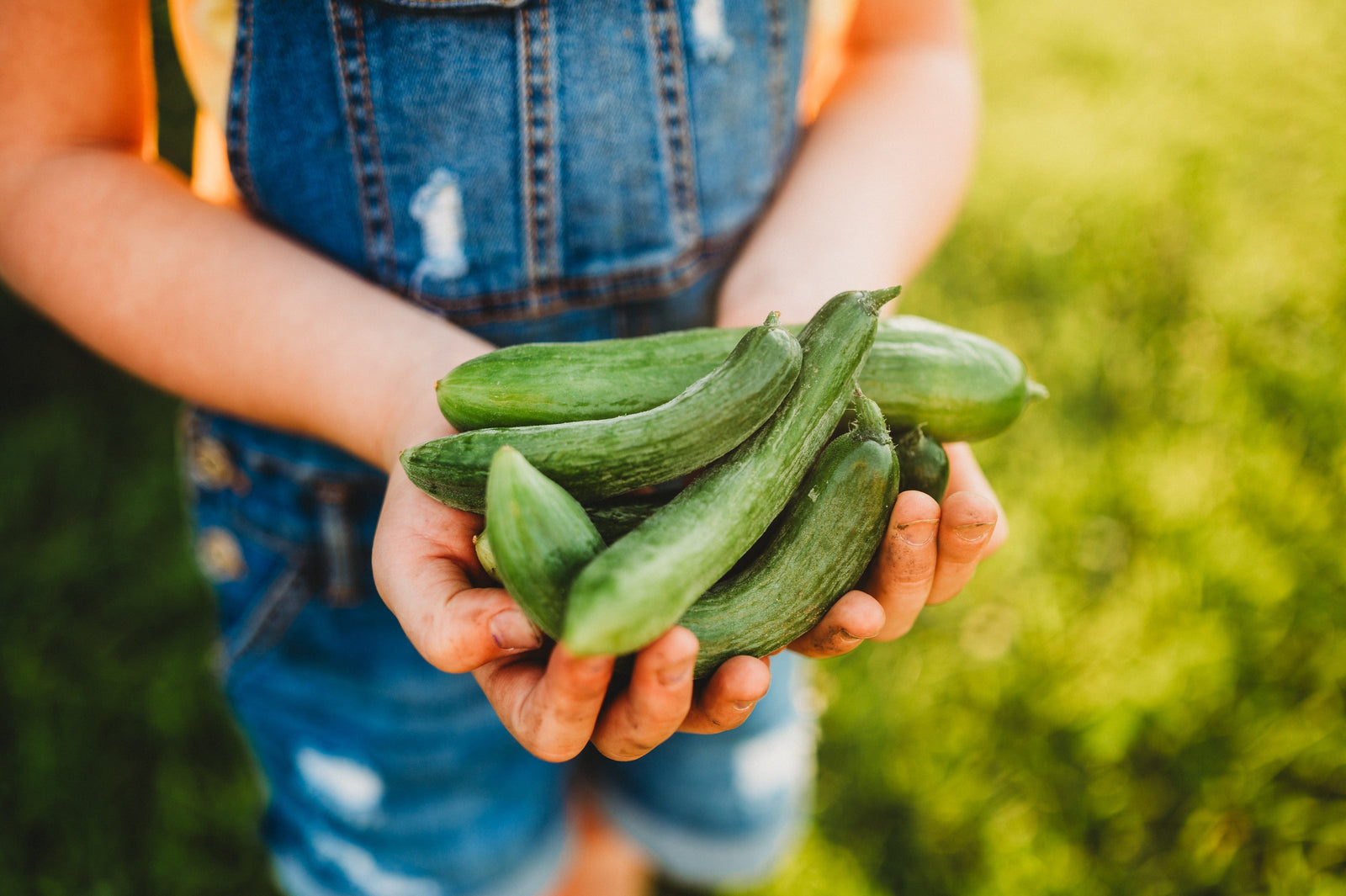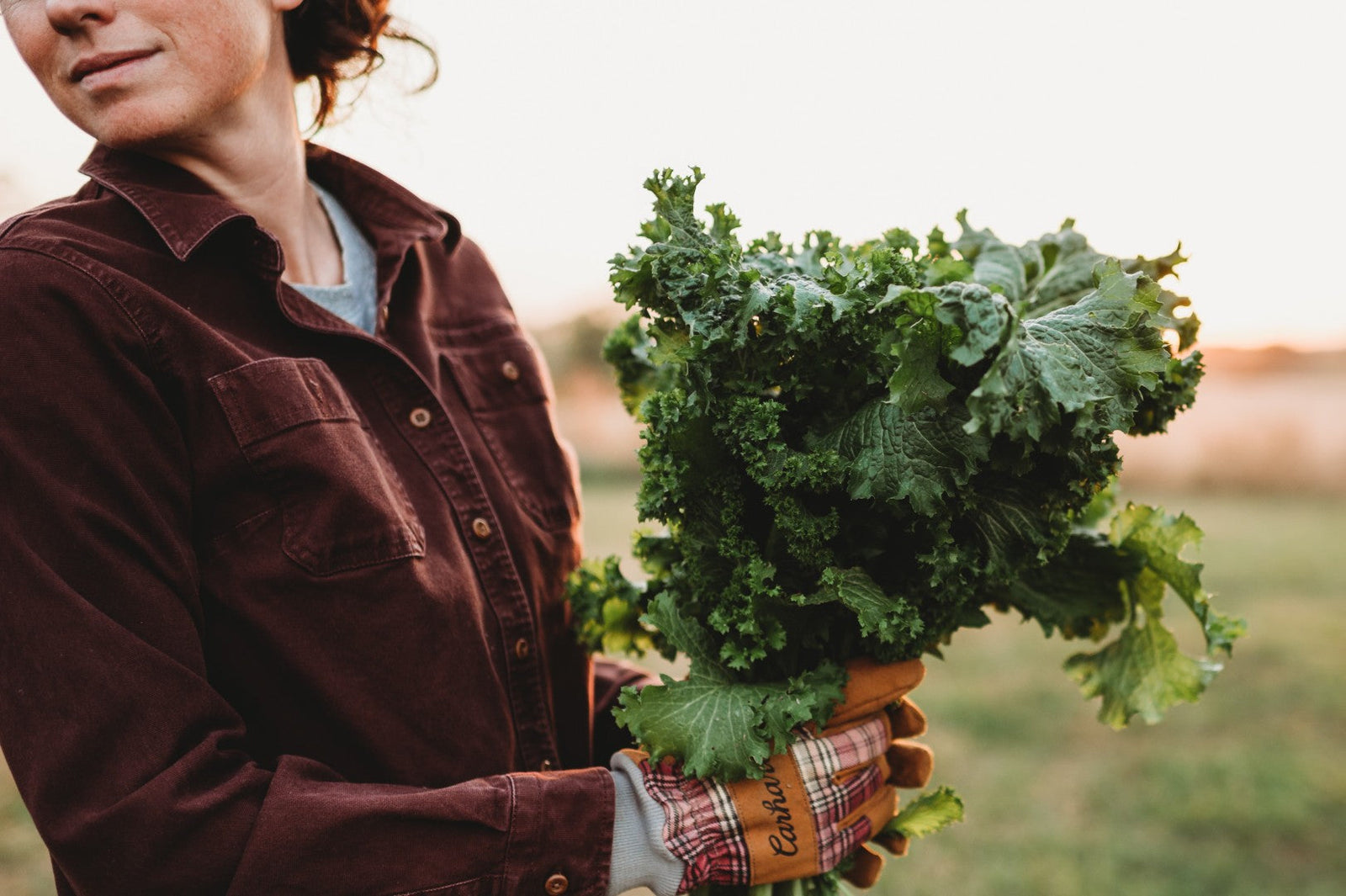Move over, Roma—Amish Paste is having a moment.
For decades, the Roma tomato's signature red, oblong fruit have dominated gardens, farmer's markets and grocery stores, beloved by gardeners and canners for their dependable yields and uniform, meaty fruit. But all the while, a humble heirloom has been staging a quiet comeback. Fueled by seed saving groups, heirloom advocates, and backyard growers searching for a tomato that can do it all, Amish Paste has pulled off a resurgence that is nothing short of remarkable, showing how an heirloom variety with deep roots can find new relevance in modern gardens.
To see why Amish Paste has captured so much attention, it helps to start with the baseline: the Roma tomato. Roma-type tomatoes, generally speaking, have been the standard for generations, bred for dependability and efficiency in the kitchen. Amish Paste, by contrast, comes from an entirely different tradition—an heirloom that predates the Roma we all know, 'Roma VF', by nearly a century. Together, they represent two very different answers to the same question: what makes the perfect paste tomato?

What’s old is new again. Once a 19th-century favorite, Amish Paste is winning hearts all over again in gardens across America.
First, what is a Roma tomato?
Although it wouldn't become a household name until 1955 with the release of 'Roma VF', the tomato type we all identify as Roma has actually been around for centuries. Grown in the rich, volcanic soils of Mt. Vesuvius, the San Marzano tomato, for example, has been in cultivation since the 16th century. It served as one of the parent lines in the development of the original 'Roma' in 1936 and remains popular today.
Over the years, other notable heirlooms have piggybacked on Roma's success. Martino's Roma, for example, was donated to Seed Savers Exchange in 1991 by a member who received the seeds of an unknown variety from her Italian neighbor and presumably Americanized the name to make it more recognizable. Likewise, Opalka, which is neither Italian, nor related to 'Roma' is frequently classified as a Roma because of its long shape, and meaty texture—qualities that admittedly do make it appear and taste somewhat Roma-like.

Although the name Roma only traces back to the 1930s, the Roma-type tomato has been around for centuries.
While these heirlooms have distinct origins, I think that given no other information besides their appearance, most of us would classify them generically as Roma tomatoes. That's because they all possess the qualities by which Roma tomatoes are best known:
- Being oblong in shape
- Containing little to no core
- Very meaty with few seeds
- Locules (seed cavities) containing little juice
For the remainder of the article, these are the characteristics I'm referring to when I describe a Roma tomato. I don't mean a Roma VF per se, because so few Roma's these days are that exact variety. Rather I'm referring to a Roma-type tomato—a meaty, relatively dry paste tomato.
The History of Amish Paste
Little is known of the history of Amish Paste except that it likely originated in Wisconsin around the 1870s. Amish tradition promotes the passing down of seeds among families and throughout communities. It was through this sharing that the variety eventually made its way to Lancaster, Pennsylvania before being commercialized in 1990 by Tom Hauch of Heirloom Seeds. Over the following decades, Amish Paste slowly garnered a dedicated following, being promoted by the Seed Savers Exchange and eventually being featured in Dr. Carolyn Male's book 100 Heirlooms for the American Garden. Today it remains one of the most popular tomatoes for canning and tops our best-sellers list almost every year.

Boosted by seed saving circles and a mention in Dr. Carolyn Male's book 100 Heirlooms for the American Garden, Amish Paste has grown to become one of the most popular paste tomatoes around.
Fruit Size and Shape
While Roma is known for its uniform oblong shape, Amish Paste is somewhat variable. The fruit tend to be somewhat heart-shaped—narrower than an oxheart, but pointier than a plum tomato. Whereas Roma's fruit consistently fall in the 2- to 4-ounce range, Amish Paste's fruit are typically larger, finishing around 8 to12 ounces. There can be variation from plant to plant, with some producing tomatoes that are larger, on average, than others.
Flavor and Texture
What really sets these two varieties apart is their flavor and texture. Roma is characteristically dry—when you cut one open, you will frequently find that the locules are filled with air, not juice like Amish Paste. They also tend to have fewer seeds. These features are what traditionally has made Roma a popular variety for canning. Fewer seeds and less water mean that the tomatoes have less waste and take less time to cook down.
Amish Paste, on the other hand, is almost an entirely different beast. Dr. Male famously states, "I don't consider it to be a true paste tomato." This because it is quite juicy with an average amount of seeds. But these drawbacks, when it comes to sauce production, can be benefits when it comes to versatility—Amish Paste also happens to be an excellent slicing tomato with a very pleasant flavor that leans sweet. Whereas I can't imagine myself reaching for a Roma tomato when making a BLT or Caprese salad, I absolutely would, and have, used Amish Paste for these purposes (more on this below).
Best Uses in the Kitchen
Both Roma and Amish Paste are excellent tomatoes when it comes to canning and sauce making. As previously mentioned, Roma tomatoes are going to be more uniform, and therefore easy to process. They'll also cook down faster, owing to their lower juice content. Finally, I find that Roma types work really well for canning whole tomatoes. They're small with just a tiny stem scar, so you needn't butcher them to get them ready for jars.

These Opalka tomatoes are one of our favorites for canning. Just a small slice to remove the stem scar and they are ready for processing.
Amish Paste, on the other hand, I find to be a little too large for canning whole. It also contains a bit of a core that I prefer to remove before canning whole or stewed tomatoes. However, where Amish Paste really shines is in sauces. That subtle sweetness adds a depth of flavor that you don't often get from Roma tomatoes, which tend to have a richer, classic tomato flavor. And I haven't done any experiments, but it also seems the jars stack up pretty quickly with Amish Paste. They're bigger, so there's less peeling, and they contain a lot of meat. This is one hefty tomato—that you can feel even as you're picking it.
Finally, as previously mentioned, I don't shy away Amish Paste for slicing and fresh eating. It's shape, in fact, is quite suitable for slicing into rounds that are about the same size as the pre-sliced mozzarella logs one gets from the grocery store. In this sense, Caprese salad is literally just a few minutes away. In fact, our 7-year-old daughter likes to surprise me with it when I come in from gardening—it's our favorite summertime snack. I wouldn't necessarily use Roma's for this purpose, especially if I have something else around, but everyone has different tastes.

Because of their juiciness and flavor, Amish Paste tomatoes can double as slicers. Our daughter loves to make her own Caprese Salad as a surprise when mom comes in from doing garden chores.
Plant Growth and Productivity
The plant growth and productivity for Amish Paste and Roma are going to differ depending on what variety of Roma you have. Amish Paste is solidly a mid-season indeterminate tomato. It's going to start producing a steady crop around 85 days after transplant and continue until frost. Depending on which type of Roma you have, it may do the same, or it may set its main crop all at once and then idle down to a trickle for the rest of the season.
Our most popular Roma-type varieties are Martino's Roma, San Marzano, and Opalka. The latter two are going to produce tomatoes all season long, while Martino's is going to set a single, huge harvest all at once. It makes for a busy week of canning, but after that, it's over—and that's kind of nice.

Martino's Roma is a determinate variety—it sets nearly all of its fruit in one large flush.
Disease Resistance and Growing Challenges
While they have similar uses in terms of sauce making, these varieties face entirely different challenges in the garden. Choosing the right variety for your climate will depend largely on the set of growing challenges you commonly face.
Fruit Imperfections
If Amish Paste has one drawback, it's its foliage. Carolyn Male calls it "a wimpy plant from start to finish", and I think that's a fair assessment. It has very sparse foliage and this lack of cover leaves it susceptible to sunscald—essentially a tomato sunburn that occurs on the shoulders of the fruit. Sunscald is frustrating for canners because it makes it hard to separate the skin from the flesh during the peeling process.
Tip: Cage plants "high and tight" to minimize sun exposure or alternatively, cover with shade cloth.
Amish Paste is also somewhat prone to concentric cracking around the stem of the tomatoes and more rarely, radial cracking down the sides. This is because the fruit are larger and juicier, making them more susceptible to moisture fluctuations and periods of rapid growth. The best way to prevent cracking is to mulch the plants and water as evenly and consistently as possible.

Concentric cracking is an imperfection that forms in some tomatoes when they receive a sudden burst of moisture. Amish Paste does this on occasion, although looking back through pictures, I was unable to find an example. Pictured here is a concentric cracking pattern in Cherokee Purple.
Blossom End Rot
While Roma type tomatoes don't suffer from those particular afflictions—their dense foliage protects them from sunscald and their relatively dry texture make them more or less crack resistant—they face an entirely different challenge: blossom end rot (BER). Roma tomatoes are notoriously susceptible to it. In fact, my Roma-types are the proverbial canaries in the coal mine when it comes to BER. If I see it develop in the Romas, I know it will eventually turn up elsewhere. Of the paste types, though, Amish Paste, is seemingly more resistant.
Foliar Diseases
One last thing I might mention: If you live in an area especially prone to tomato diseases, you might consider a variety like Martino's Roma. It has a durable, dark green foliage type known as rugose, which for whatever reason, seems to be more resistant to early blight. Martino's Roma also tends to be less susceptible to blossom end rot, compared with other Romas, making it a good option if you want to try a Roma, but live in an area prone to dry spells.

The Rugose foliage of Martino's Roma makes the plants more resistant to early blight, a notable benefit to gardeners who live in areas prone to blight.
Which Should You Grow?
I know, we've discussed a lot here, leaving you, the gardener, with a lot to think about. If you are trying to decide which variety to grow, I would consider a few of the most important factors:
- Your climate—if you live in a climate that is particularly hot and dry, Roma tomatoes are going to be susceptible to blossom end rot. Perhaps not a good fit.
- Your space—If you have limited space, Amish Paste is going to give you a tomato that can be used for slicing or canning, all from one plant.
- Your intended use—Want to can as many jars as possible in the least amount of time? Probably a high-yielding Roma like Martino's. Want some slicers too? Amish Paste all the way.

Choosing the best paste tomato is going to depend on a variety of factors. Your climate, available garden space, and intended use for your tomatoes are all important factors to take into consideration.
Conclusion
Well, there you have it—a head-to-head comparison of two of the most popular tomatoes in modern American history. Crowning a winner is about as easy as picking the world's best barbeque—it depends largely on your region and your own personal taste. But if I had to summarize, it comes down to this: If all you want is sauce and canned tomatoes, Roma will give you exactly what you’re after—with the least time spent by the stove. If, on the other hand, you'd like a tomato that can do double duty, one that’s just as at home on a sandwich as it is in a simmering pot of sauce, Amish Paste is hard to beat. It’s a workhorse with history—an heirloom that bridges the old and the new, reminding us that sometimes the best improvements come not from innovation, but from rediscovery.






